Hapag-Lloyd Cruises
History, Review, Itineraries, Ships, Deck Plans, News
Hapag-Lloyd Cruises fleet
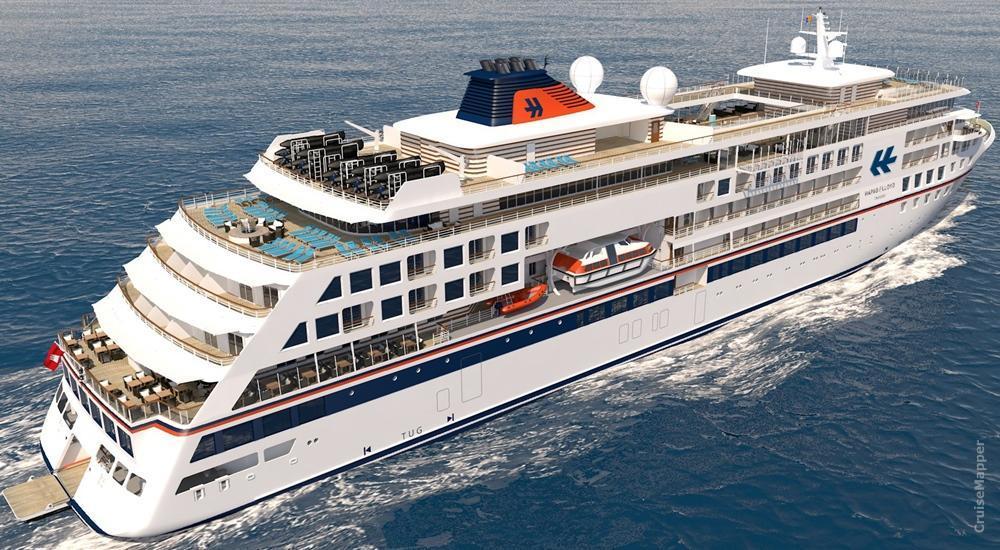
Hanseatic Spirit
Next cruise: 20 days, one-way from Ushuaia to Buenos AiresHapag-Lloyd CruisesYear build 2021 / Age : 5 Passengers 199 - 230 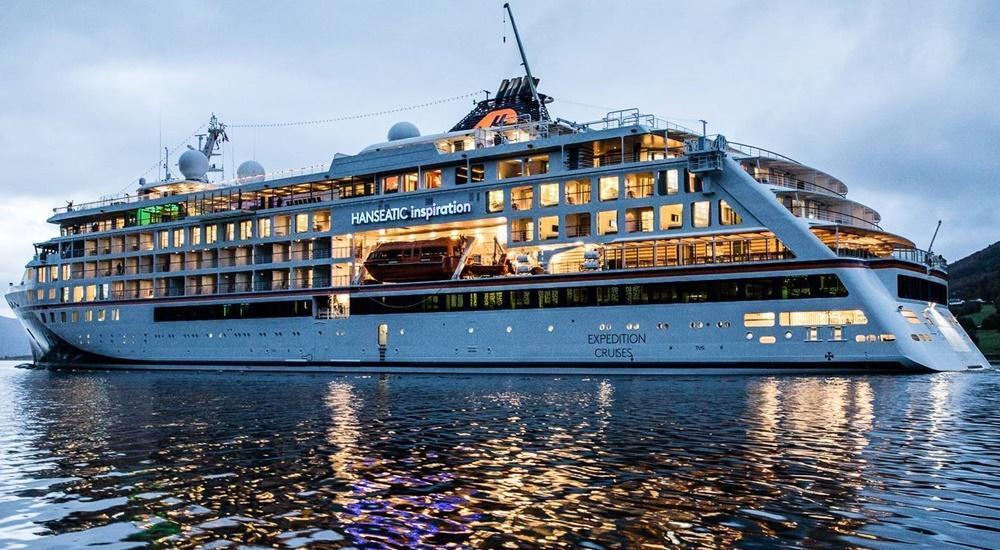
Hanseatic Inspiration
Current cruise: 20 days, round-trip AntarcticaHapag-Lloyd CruisesYear build 2019 / Age : 7 Passengers 199 - 230 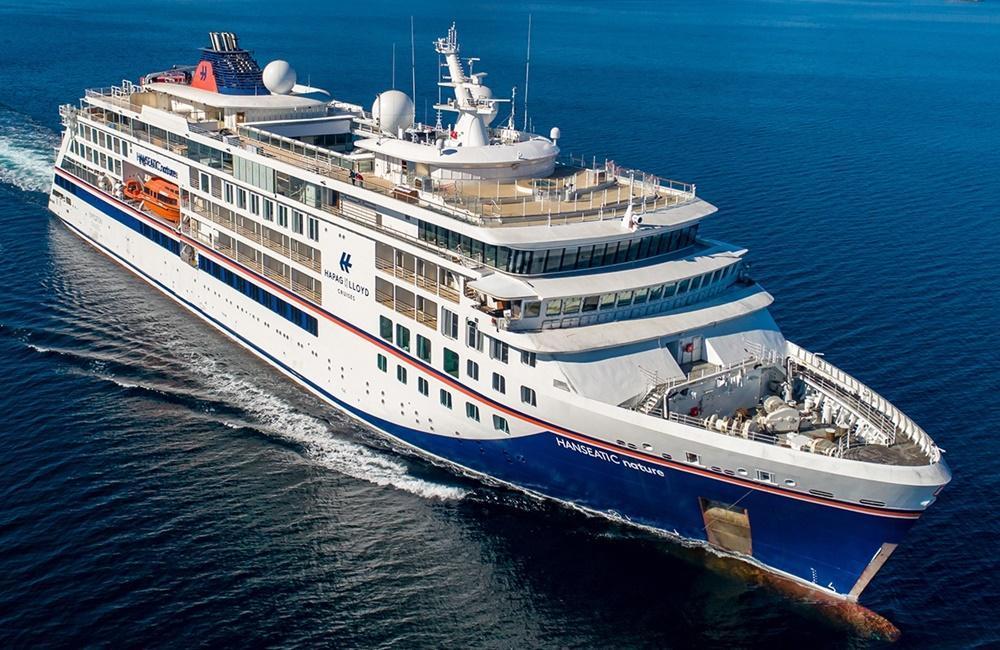
Hanseatic Nature
Current cruise: 15 days, round-trip Norwegian FjordsHapag-Lloyd CruisesYear build 2019 / Age : 7 Passengers 199 - 230 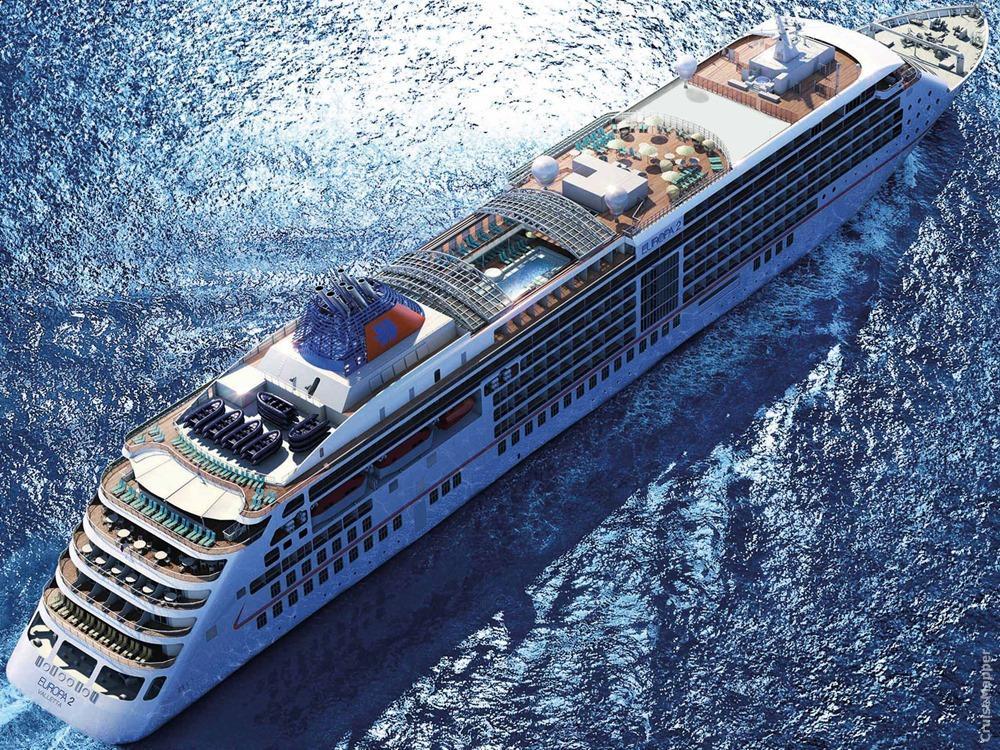
ms Europa 2
Next cruise: 20 days, one-way from Los Angeles to PapeeteHapag-Lloyd CruisesYear build 2013 / Age : 13 Passengers 516 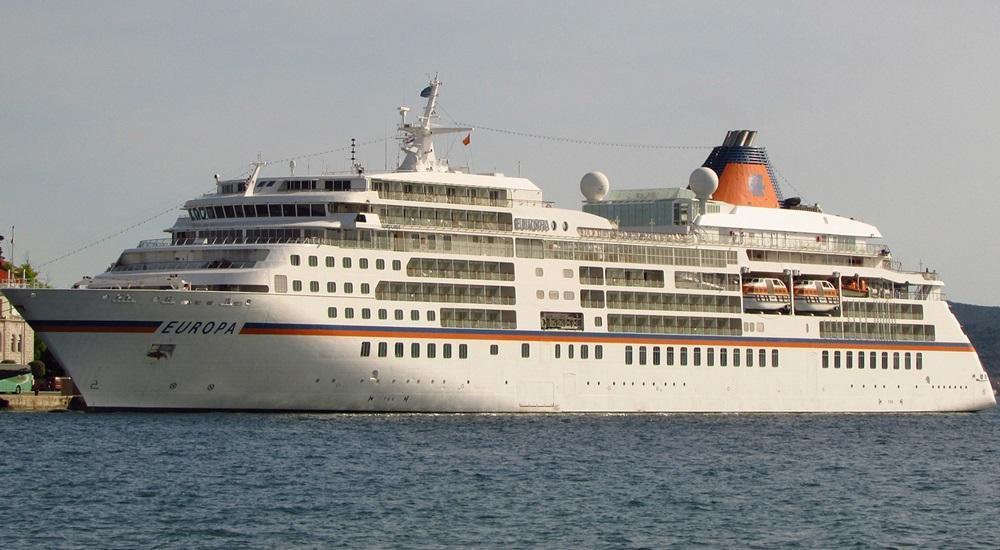
ms Europa
Current cruise: 19 days, round-trip Expedition Route In Madagascar With The Europa Port Louis Mauritius - Port Louis MauritiusHapag-Lloyd CruisesYear build 1999 / Age : 27 Passengers 408
Review of Hapag-Lloyd Cruises
Hapag-Lloyd Cruises (officially Hapag-Lloyd Kreuzfahrten, hl-cruises.com) is a premium travel brand based in Hamburg, Germany, and is part of TUI AG (via its subsidiary TUI Cruises GmbH).
Between 2017 and 2020, Hapag-Lloyd Cruises was fully owned by Hapag-Lloyd AG (a German-Chilean shipping company, one of the world’s oldest), which is currently ranked the world’s 5th largest container shipping line in terms of fleet capacity.
On February 7, 2020, TUI AG (also known as TUI Group) announced that Hapag-Lloyd Cruises (valued at approximately EUR 1.2 billion / USD 1.36 billion in 2020) would become part of TUI Cruises (a 50-50 joint venture between TUI and RCCL-Royal Caribbean). The contract was signed in Hamburg on February 7, and the cash transaction from RCCL (~EUR 700 million) was completed on July 6, 2020.
The company’s current CEO/Managing Director is Isolde Susset, who succeeded Julian Pfitzner in June 2024.
The Hanover, Germany-based TUI AG (a British-German multinational) is currently ranked as the world’s largest leisure and travel company. It was founded in 1923 and was named "Preussag AG" until 2002. TUI Group's companies specialize in hospitality and tourism services worldwide, with a portfolio that includes passenger airlines, cruise shipping (shipowner), package vacations, hotels and resorts, travel agencies, and retail shops.
Company History/Changes
The Hapag-Lloyd company was founded in 1970 through the merger of two of Germany’s oldest steamship companies: "Hamburg-Amerikanische Packfahrt-Actien-Gesellschaft" (Hapag) and "Norddeutscher Lloyd." Both companies were established in the 1840s for shipping freight and passengers across the Transatlantic route between Germany and the USA.

On July 12, 2017, TUI AG sold its remaining 8.5 million shares in Hapag-Lloyd AG, raising ~EUR 244 million. The operation was an open-market block trade (Accelerated Book Building) with a guaranteed minimum price close to the day’s market closing. Before this trade (in March 2017), TUI AG sold a total of 6 million Hapag-Lloyd shares in individual open-market transactions. By disposing of all its HP shares, TUI completed the corporation's non-core business disposal program initiated after the merger of TUI AG and TUI Travel PLC in December 2014. The proceeds were used to support TUI’s tourism business (hotel brands and cruise ships).
In 2017, Hapag-Lloyd Cruises reported a record average daily rate of EUR 594 (per person, per day), marking a 2.6% increase from 2016. The company also reported the highest-ever customer satisfaction and quality ratings. The company’s average daily ticket prices increased as follows: 2011 (EUR 399), 2012 (EUR 420), 2013 (EUR 450), 2014 (EUR 536), 2015-2016 (EUR 579), and 2017 (EUR 594).
For FY2018 (fiscal year), TUI Group's earnings from its three cruise brands—TUI, Marella, and Hapag-Lloyd—rose by 10.7% to EUR 901.9 million. The company's turnover was EUR 324 million, a 26.8% increase over 2017. The Group's average daily rates increased as follows: EUR 178 (TUI, up from EUR 173), EUR 141 (Marella, up from EUR 131), and EUR 615 (Hapag-Lloyd, up from EUR 594).
Since July 2020, Hapag-Lloyd's fleet exclusively uses LS-MGO (low sulfur marine gasoil) with a maximum sulfur content of 0.1%.
In December 2025, HP replaced its 3-tier pricing model with 2-fare structure, simplifying the booking process - PLATINUM (expanded flexibility) and SILVER (familiar range of core services). PLATINUM fare travellers access a one-time free rebooking of the cruise date up to 90 days, and cancellations are allowed up to 180 days before departure. Since January 2026, the company's shipboard inclusions include a selection of complimentary soft drinks throughout the day to all guests. Standard complimentary amenities across both fares remain unchanged, including champagne on arrival, a daily replenished minibar, 24-hour in-cabin dining, gourmet cuisine, and land tours/excursions.
Hapag-Lloyd Cruising Experience
Hapag-Lloyd Cruises offers high-end luxury travel experiences, featuring:
All of Hapag-Lloyd's cruise ships offer both in-port and onboard experiences, ranging from zodiac expeditions to luxurious settings. Vessels are positioned at the higher end of the market, with fares generally on the higher side. Hanseatic and Bremen are expedition ships with the highest ice-class rating (E4), allowing year-round navigation in the Antarctic and Arctic regions. Bremen is rated 4 stars, while Hanseatic is rated 5 stars, offering upgraded enrichment, cuisine, and larger cabins.
The launch of the first Hapag-Lloyd newbuild, Europa 2, took place in May 2013. The project was aimed at the ultra-luxury market and attracted younger, more active, and less luxury-focused travelers, including families (with facilities for children of all ages). MS Europa 2 is the brand’s most contemporary and stylish ship, featuring dynamic and sophisticated entertainment options, from a jazz club to a kitchen studio (for cooking classes). Its appeal lies in attracting younger cruisers, including families, who are less focused on luxury.
Hapag-Lloyd's all-suite ships Europa 1 and Europa 2 provide the largest space-per-guest ratio of any cruise ships currently on the market. All Europa 2 staterooms have balconies. The company has also marketed MS Europa 2 as its "bilingual ship," designed to appeal to international customers with enhanced activities aimed at English-speaking passengers.
New Ships
Next, Hapag-Lloyd’s new expedition cruise ship design is presented. Three Polar-Class vessels are currently under construction and scheduled for launch between 2019 and 2021: Hanseatic Inspiration (October 2019), Hanseatic Nature (April 2019), and Hanseatic Spirit (2021).
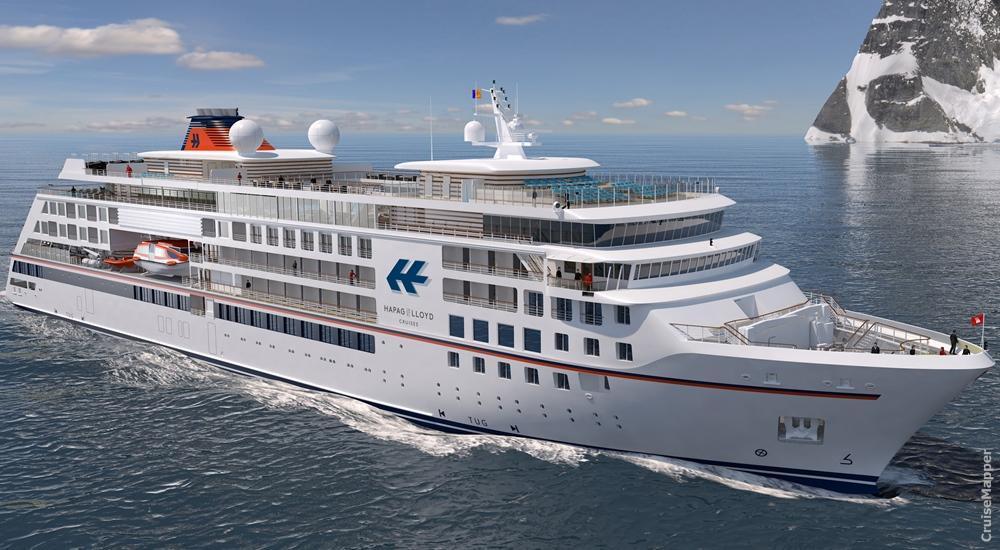
The newbuilds are sister ships, each with a maximum capacity of 230 passengers (199 passengers on Antarctic cruises), 3 restaurants, an extensive wellness area, a water sports marina (aft), and a fleet of Zodiacs (large-capacity inflatable boats used for landings and shore excursions).
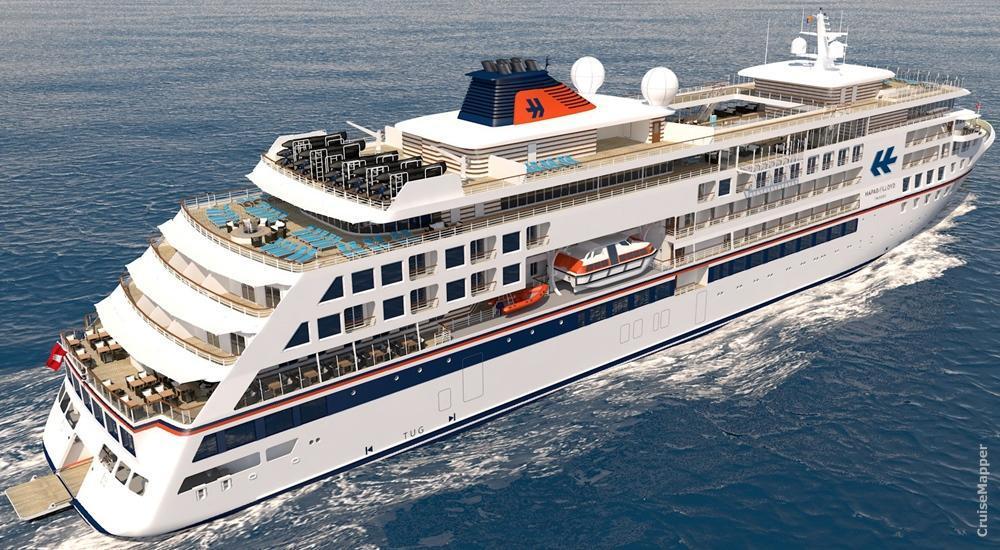
On July 3, 2018, VARD Holdings Ltd and Hapag-Lloyd Cruises signed a shipbuilding contract for the third vessel in the HANSEATIC series (Spirit). The new ship is scheduled for delivery in Q2 2021. All ships in the series have their hulls built by VARD Tulcea shipyard (Romania).
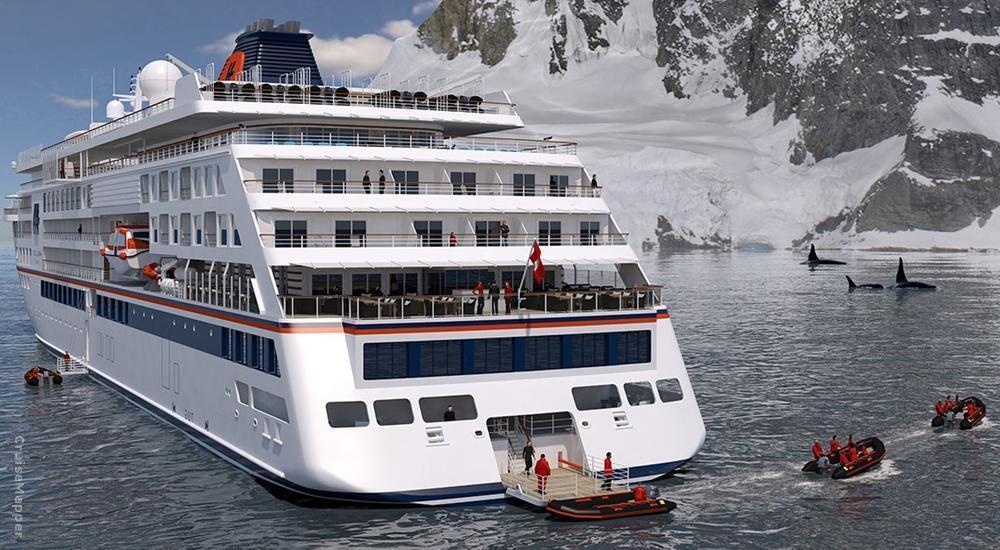
In late February 2019, Hapag-Lloyd introduced a user-friendly digital concept for onboard learning, never before seen on expedition vessels. The new "study wall" is available on the fleet’s three new Hanseatic ships (Inspiration, Nature, Spirit).
The innovative touchscreen technology (screen size 6x1.8 m / 20x6 ft) allows passengers to research information and various topics related to the ship's current cruise itinerary destinations. The digital Study Wall was developed over a 2.5-year period through a partnership with two German companies based in Hamburg: Intermediate Engineering GmbH and mpg ErlebnisRaumDesign GmbH.
Digital content (articles, biographies, photos, videos) is divided into five categories. Most of the information is provided by GEOMAR (Kiel, Germany), as well as by journalists, scientists, and experts. The Study Wall is located in the Knowledge Studio (Wissens Atelier / Deck 8). The research facility also includes four Study Seats (with touchscreens to explore the content), Study Posters (visual scientific explanations), and a dedicated area for microscope research.
In mid-August 2017, MS Bremen (now Seaventure/1990-built) received the "Polar Code" certificate, which allows the vessel to operate in polar regions. All its fleetmates were also due to receive the certificate by Hapag-Lloyd’s 2018 Arctic season. The Polar Code (adopted by IMO) contains regulations about the construction and onboard equipment of polar cruise vessels, as well as crew training requirements. In 2017, as part of the HL fleet's routine drydocks, all ships were brought in line with the Polar Code’s requirements. MS Bremen was scheduled to operate 3 Arctic cruises (2018-2019 season), including one Northeast Passage (summer 2018).
(Coronavirus Crisis) Passenger Shipping Pause 2020-2021
Due to the COVID-19 pandemic, Hapag-Lloyd suspended its entire fleet's passenger shipping operations by canceling all voyages with pre-scheduled departures between March 18, 2020, and May 2021.
HL cruise operations resumed in 2021 on May 24 (Hanseatic Inspiration/Baltic), July 9 (Hanseatic Nature/Norway), August 14 (MS Europa/Baltic from Hamburg), October 2 (Hanseatic Spirit/Asia-Japan), and October 3 (Europa 2/Canaries).
All affected bookings received full refunds, including for prepurchased HL packages and services. All current voyages were completed by March 21, 2020.
Itinerary of Hapag-Lloyd Cruises
Currently, Hapag-Lloyd offers an array of "high-end luxury" cruises for well-heeled travelers. The line's signature destinations include the Mediterranean, Northern Europe, the Caribbean, Asia, Australia, as well as expedition itineraries to Antarctica and Alaska (Northwest Passage).
The current Hapag-Lloyd cruise fleet includes the following vessels:
- ms Europa (1999)
- ms Europa 2 (2013)
- Hanseatic Inspiration (October 2019), Hanseatic Nature (April 2019), and Hanseatic Spirit (2021) are newbuilds/sister ships, each with a max passenger capacity of 230 (199 on Antarctic cruises), 3 restaurants, an extensive wellness complex, and an aft water sports Marina Platform.
On January 15, 2019, Hapag-Lloyd announced that MS Bremen had been sold to Scylla Cruises and would be delivered to the new owner in May 2021. As of 2019, Scylla owned 31 riverboats, most of which are chartered to various European cruise tour companies.
Along with the introduction of expedition cruise catalogs for the 2020-2021 season, Hapag-Lloyd Cruises announced that low-pollutant MGO (marine gas oil) would be exclusively used on all routes of its expedition ships (Hanseatic Nature and Hanseatic Inspiration) starting July 2020. Hanseatic Spirit, joining the fleet in 2021, is also expected to use this fuel.
The use of low-sulfur fuels in Antarctica has been mandatory for several years, and Hapag-Lloyd Cruises has already voluntarily used marine gas oil in sensitive regions such as the Arctic and Kamchatka. The low-pollutant fuel has a sulfur content of just 0.1%. In addition, the new expedition ships are not only equipped with an SCR catalytic converter that reduces nitrogen oxide emissions by nearly 95%, but also feature cold ironing capabilities.
The Hapag-Lloyd Cruises fleet is also equipped with seawater desalination technology that produces clean water, along with biological sewage treatment plants. The ships' bow thrusters and stabilizers run on bio-petroleum, making them more environmentally friendly.
Northwest Passage Cruises
Hapag-Lloyd was the world's first cruise line to offer a Northwest Passage Cruise itinerary. In 2011, MS Bremen became the first-ever cruise ship to cross the Passage, from Kangerlussuaq, Greenland to Nome, Alaska. In 2012, MS Hanseatic (now RCGS Resolute) made a full transit with a 25-day itinerary, departing from Nome, AK (on August 14) and ending in Reykjavik, Iceland (on September 7).
2025-2026 Antarctic expedition program
Central to the program is the introduction of an extended voyage into the rarely visited Weddell Sea, representing a first for the line.
The new routes include the "Grand Antarctic Route," combining stops at the Falkland Islands, South Georgia, and a transit through the Weddell Sea. Passengers will experience remote landscapes and wildlife encounters, with activities such as snowshoe hikes and Zodiac excursions along ice formations. The itineraries target seasoned travelers with a strong interest in exploration and nature observation.
All Antarctic sailings will feature extended periods in remote regions, with the support of experienced expedition teams. Guests will encounter unspoiled wildlife habitats, sites of historical significance, and landscapes largely untouched by human activity.
Premiere of Weddell Sea Expedition (SPI2601)
The HANSEATIC spirit will undertake a 22-day expedition dedicated to the eastern portion of the Antarctic Peninsula, focusing on the Weddell Sea. This body of water, known as the coldest sea on Earth, is characterized by heavy pack ice, massive table icebergs, and extensive ice fields. The HANSEATIC spirit, constructed with ice class PC6 and operated by an experienced polar crew, is equipped to navigate these challenging waters with confidence.
Destinations on this itinerary include Paulet Island and Devil Island, where survivors of the 1903 Swedish Nordenskjöld expedition once endured nearly a year in the harsh environment. The area is now populated by thousands of Adélie penguins. The voyage also passes near the historical site where Ernest Shackleton’s vessel, the Endurance, was trapped and sunk in 1915, a pivotal moment in the history of polar exploration.
The expedition will combine intensive wildlife viewing opportunities with landings conducted by Zodiac, offering detailed exploration of both Antarctic and sub-Antarctic regions. Prior to entering Antarctic waters, the HANSEATIC spirit will navigate the fjords of southern Chile, passing through a series of granite-lined waterways, glaciers, and volcanic landscapes during the 2025 Christmas and New Year season. A similar voyage aboard the HANSEATIC inspiration is scheduled for February 2026.
Cape Horn and Antarctic Expedition (SPI2602)
Another notable itinerary, the Antarctic Expedition with Cape Horn, includes a landing at the southernmost tip of South America, a landmark of maritime significance historically regarded as a major challenge for navigators. Subject to weather conditions, guests may land at Cape Horn before proceeding across the Drake Passage to the Antarctic Peninsula.
The voyage will feature landings in regions notable for their glaciers, penguin colonies, and striking coastal formations. The combination of Cape Horn and Antarctic exploration renders this route distinctive, as it will remain the only offering of its kind in the Hapag-Lloyd Cruises program through the end of 2027.
2027-2028 expedition program
Hapag-Lloyd Cruises' sailing schedule for the fourth quarter of 2027 is extending into early 2028, with a lineup of 28 new itineraries across its luxury and expedition fleet. The updated program includes routes spanning from West Africa to the Indian Ocean, as well as transatlantic crossings, Central America, and polar expeditions. This schedule marks a continued expansion of the company's global presence and operational focus.
The company has made all Q4 2027 voyages immediately bookable—without a prebooking phase—for the first time. This decision is aimed at streamlining early reservation processes. An early booking discount applies for all voyages confirmed by January 31, 2027, with clearly defined amounts based on itinerary length.
The expedition vessel a href="https://www.cruisemapper.com/ships/Hanseatic-Nature-1736">HANSEATIC nature will debut a new routing through West Africa and the Indian Ocean. Departing from Hamburg, the ship's path includes Madeira, Ghana, Mozambique, and the Seychelles. The itinerary highlights include the Takoradi, providing cultural and agricultural insights into cocoa production, and Nacala (Mozambique), a lesser-visited coastal region marked by rich biodiversity and mangrove ecosystems. Zodiac landings and expert-led field excursions will enable in-depth exploration of these remote areas.
A separate voyage aboard HANSEATIC nature will proceed from Cape Town to Mahe, Seychelles, over 16 days, incorporating ports such as Hermanus, Durban, and Mamoudzou. The ship’s small size and expedition capabilities will facilitate access to lesser-developed coastal areas and ecologically sensitive zones.
The Antarctic remains a cornerstone of Hapag-Lloyd Cruises’ expedition portfolio. HANSEATIC inspiration and HANSEATIC spirit will both operate extended voyages to the southern polar region. These routes, ranging from 20 to 22 days, include landings in South Georgia, the Falkland Islands, and the Weddell Sea. As with previous Antarctic seasons, the voyages are supported by onboard scientific teams comprising biologists, glaciologists, and historians, and include Zodiac operations for shore-based activities.
MS EUROPA, the company’s luxury vessel, will link West and South Africa with Indian Ocean destinations. A key itinerary will commence in Hamburg, proceed through Tenerife, and reach Cape Town. The routing includes stops in the Cape Winelands and along the Garden Route, offering optional safari and culinary excursions. From Cape Town, the voyage continues to Mauritius via Réunion, Port d’Ehoala, and other regional destinations. Another notable departure is the vessel’s festive season cruise, traveling from Mauritius to Sri Lanka, via Seychelles and the Maldives.
MS EUROPA 2 will begin its season in northern Europe, sailing the Baltic Sea and Norway before transitioning westward across the Atlantic to New York. Following this, it will operate a southern itinerary through the Gulf of Mexico and the southeastern United States, calling at new ports including Galveston and Tampa. A seasonal Caribbean itinerary concludes the year, combining traditional destinations such as Antigua, Aruba, and Cartagena with a Panama Canal transit.
The 2028 programme features 127 routes designed to showcase the company’s long-standing expertise in luxury and expedition travel. The itineraries, available for booking from December 2025, will span destinations from the polar regions to tropical islands, offering what the line describes as an unparalleled combination of cultural depth and natural exploration.
The schedule incorporates voyages across both the luxury vessels EUROPA and EUROPA 2 and the expedition trio HANSEATIC nature, HANSEATIC inspiration, and HANSEATIC spirit. The itineraries reflect the line’s focus on diversification — blending established favourites with new ports and route combinations refined through more than a century of navigational experience.
The EUROPA will dedicate early 2028 to Asia, returning to Japan during the cherry blossom season and including extended calls in the Philippines and throughout Southeast Asia. Subsequent itineraries feature sailings through the Indian Ocean and along Africa’s western coastline before the ship returns to the Mediterranean for a focused summer season of shorter cruises. Autumn routes include Western Europe, Greenland, and Canada, with Caribbean voyages concluding the year.
Meanwhile, EUROPA 2 will open the year in Central America, visiting Costa Rica, Panama, and Colombia, before repositioning across the Atlantic. The ship will spend the summer operating Northern Europe itineraries, including rare calls at Svalbard, and later move to the Mediterranean and Arabian Gulf.
The expedition fleet will also expand its operational range. While HANSEATIC inspiration and HANSEATIC spirit continue to explore Antarctica, HANSEATIC nature will spend the early months of 2028 in the Indian Ocean, operating expeditions in Madagascar, the Seychelles, and the remote Aldabra Atoll. Later in the year, it will transition to Northern Europe for a series of short polar and Baltic cruises.
Highlights across the fleet include the return of semi-circumnavigations between South America and New Zealand, first-time expedition itineraries through Indonesia’s Raja Ampat and Australia’s Kimberley region, and renewed focus on North America’s Great Lakes. Hapag-Lloyd Cruises remains the only operator to connect all five Great Lakes within a single voyage.
The Faroe Islands Cruise Boycott (Animal Cruelty)
In mid-July 2016, Hapag-Lloyd became one of three cruise ship companies (along with Disney and AIDA) to ban the Faroe Islands (a Danish territory) as a destination on their North European itineraries.
The boycott was a response to the island nation's traditional mass slaughter of pilot whales each year. The protected by Denmark, gruesome practice is called “Grindadrap Grind.” Locals use motorboats to drive a pod of whales into a harbor, where the defenseless animals are dragged to shallow water and brutally slaughtered by locals armed with knives (16-19 cm / 6-8 inches long), while their families cheer them on. The killing party even rips baby whales from their mothers.
The Faroe Islands, with a population of about 50,000, kills over 1,000 pilot whales annually. You can see the cruise ship schedule for Torshavn, the Faroes' most visited port. All cruise lines with scheduled visits to the Faroes are accused of supporting these brutal whaling practices. Whaling is still officially permitted in "civilized" countries like Japan, Norway, and Iceland, which together kill over 2,000 whales each year and trade in whale products.
Hapag-Lloyd's response to the "Faroese Pilot Whaling Act" is to continue to avoid the islands, as the law permits the culling or massacre of pilot whales. The act also empowers local authorities to imprison (for up to two years) those who impede these whaling activities, despite international condemnation.
Sea Shepherd and Greenpeace are among the largest organizations taking direct action against the "Faroese Pilot Whaling Act." Most of the haunting images of slaughtered whales in a sea of blood come from these organizations.
Hapag-Lloyd Cruises related cruise news
- Cruise Industry

Hapag-Lloyd Cruises unveils 2-fare structure for 2025 bookings
Hapag-Lloyd Cruises has announced a revised fare structure that will take effect for all new bookings made on or after December 2nd, 2025. The...
December 1, 2025 - Cruise Industry

Hapag-Lloyd Cruises unveils 2028 Global Programme featuring 127 routes
Hapag-Lloyd Cruises has previewed its 2028 programme, featuring 127 routes designed to showcase the company’s long-standing expertise in luxury...
October 7, 2025 - Cruise Industry

HANSEATIC inspiration cruises the USA Great Lakes in 2026-2027
The HANSEATIC inspiration has embarked on a season through the inland labyrinth of the Great Lakes, an environment seldom navigable by large vessels...
October 2, 2025 - Cruise Industry

Hapag-Lloyd announces new 2027 Mediterranean–South Pacific itineraries aboard Europa 2
Hapag-Lloyd Cruises has redirected the Europa 2 for the summer season of 2027, assigning the vessel four reimagined voyages from June 2nd to August...
September 6, 2025 - Cruise Industry

Hapag-Lloyd Cruises embarks HANSEATIC inspiration on Northwest Passage Odyssey
Climates could scarcely be more opposed, yet the Northwest Passage and the South Seas hold in common a singular promise: extraordinary discoveries...
August 24, 2025 - Cruise Industry

Hapag-Lloyd Cruises extended 2027–2028 schedule
Hapag-Lloyd Cruises has announced its sailing schedule for 2027-Q4, extending into early 2028, with a lineup of 28 new itineraries fleetwide. The...
July 28, 2025 - Cruise Industry
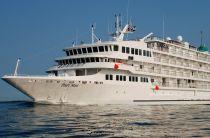
Pearl Seas Cruises joins major companies for 2025 Great Lakes season
Pearl Seas Cruises has formally aligned with several prominent companies and travel brands—Victory Cruise Lines/VCL, VikingOCEAN, St Lawrence...
June 4, 2025 - Cruise Industry

Hapag-Lloyd's ms EUROPA charts Southern Africa and Indian Ocean voyages for Winter 2025–2026
Hapag-Lloyd Cruises’ luxury vessel EUROPA is set to return to southern Africa and the Indian Ocean from autumn 2025, offering a series of...
May 16, 2025 - Cruise Industry

Hapag-Lloyd's ship HANSEATIC inspiration starts South American cruises in 2025
In November and December 2025, Hapag-Lloyd Cruises will offer 3 meticulously planned expeditions aboard the HANSEATIC inspiration, traversing the...
May 15, 2025 - Cruise Industry

Hapag-Lloyd Cruises joins CLIA Australasia as regional member
Hapag-Lloyd Cruises, a prominent operator in the luxury and expedition cruise sector, has become a Regional Member of Cruise Lines International...
May 1, 2025 - show more news
